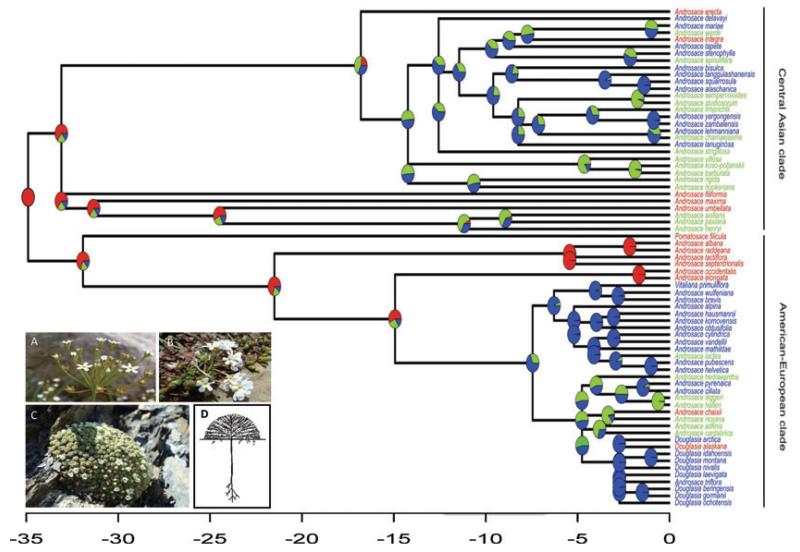Figure 1.
Evolution of life forms in the Androsace genus. The tree is the consensus tree for 71 species of the genus, with the time scale given in million years. Two main clades segregate from the root. Each ancestral node is colored according to the marginal likelihoods of the different life forms in the NEJ-root model (red = short-lived; green = perennial; blue = cushion). Tips are colored the same way. The cushion life form appears independently in the two main clades. Photographs show representatives of the different life forms. (A) A. septentrionalis, short-lived (annual, photo: S. Aubert/SAJF). (B) A. adfinis, perennial (photo: F.Boucher/LECA). (C) A. helvetica, cushion (photo: F. Boucher/LECA). (D) Schematic representation of the cushion morphology, with its dense canopy formed by radial ramifications (illustration in R. Ruffier-Lanche 1964).

